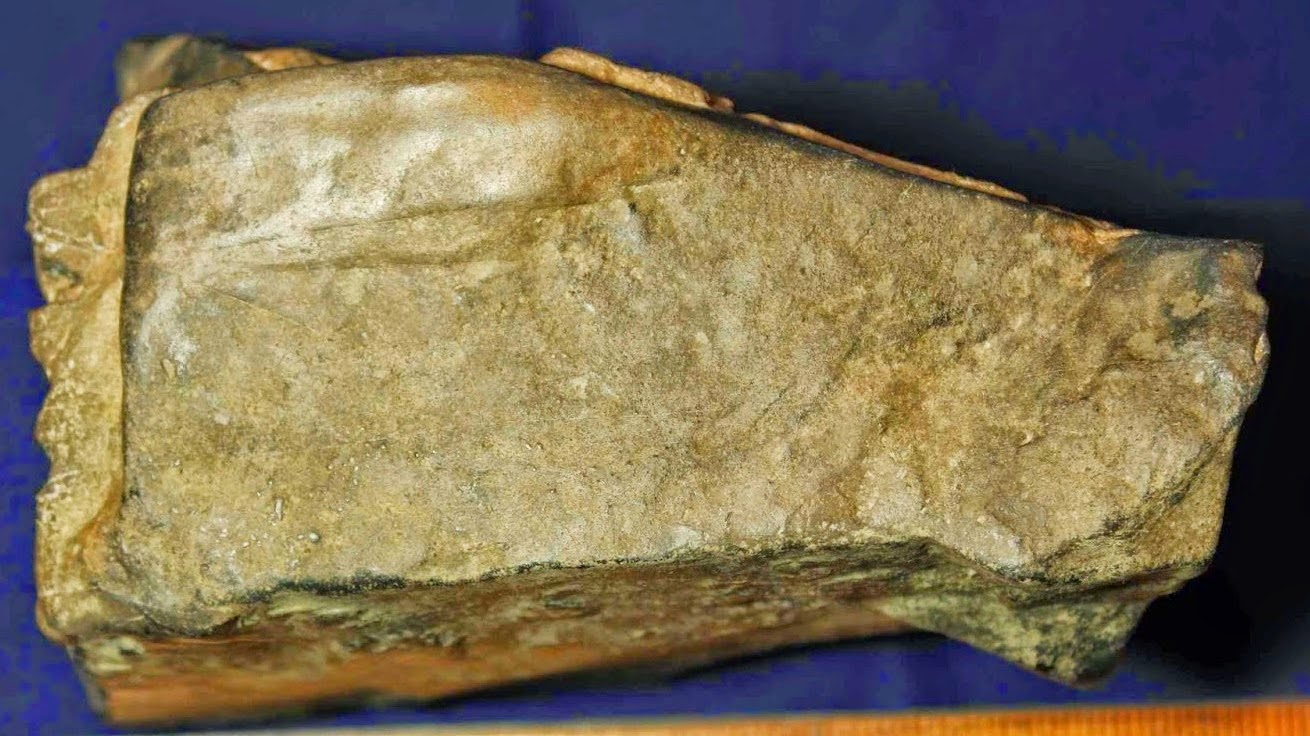Bobcat head figure identified by Lisa Deason. Lisa has identified a significant portable rock art site and her finds seen here cover art motifs observed by so many other people. The site is on her farm in Lee County, Alabama.
Lion head figure identified by Lisa Deason
Lisa Deason writes "To my knowledge, there are no documented discoveries of this art form in Alabama. There is not a registered site in this city not even a historic site; there are however, some in nearby Phenix City, Opelika and Auburn.
The President of the Alabama Archaeological Society in Auburn came to look at our land after I found the first point and a few flakes and she said it could possibly have been a camp. She told me to call her if I found anything else and so of course I did, but she never came nor called me back. That was in 2010 and I never pursued...not even after finding all the art pieces. So needless to say, it's just been my destiny to find them, care for them and enjoy their beauty.
I exhausted all efforts to find information on the internet as I couldn't find anything other than
Days Knob. When I read of the struggles and challenges they faced with archaeologists acknowledging their finds as true artifacts, I decided to give up on ever learning more or connecting with someone with knowledge. I only began my research again after hearing all about pre-Clovis research. It was then that I thought that since I can't find others who have found what I have found, maybe it's because it's undiscovered elsewhere since it took this long to find it here.
I typed in portable rock art last week and there was your blog. So that's where I'm at and I am so excited to be able to share it with others and be able to discover and learn more myself along the way. Thank you for doing what you do. :-)"
Thank you Lisa for sharing your very important finds.
Alan Day at Day's Knob has since had success in establishing probable artificiality of figurative stones in a number of cases with the assistance of a doctorate level Petrologist, specialist in the composition and formation of rocks.
Lisa Deason finds include tools along with figurative pieces.
In the same way we can perceive both a rabbit and a duck head in the famous optical illusion, the Lisa Deason sleeping duck here may also be seen as a rabbit with ears folded down (sleeping rabbit). It is polyiconic and is both in the visual illusion. Prehistoric artists exploited ambiguity like this to affect deeper or additional meanings in their art.
Alabama lion head (left) compared to Flint Ridge, Ohio, object identified as a lion head in an earlier posting. These two objects are probably mediated by the same visual cultural tradition.








































































+crop.jpg)


























